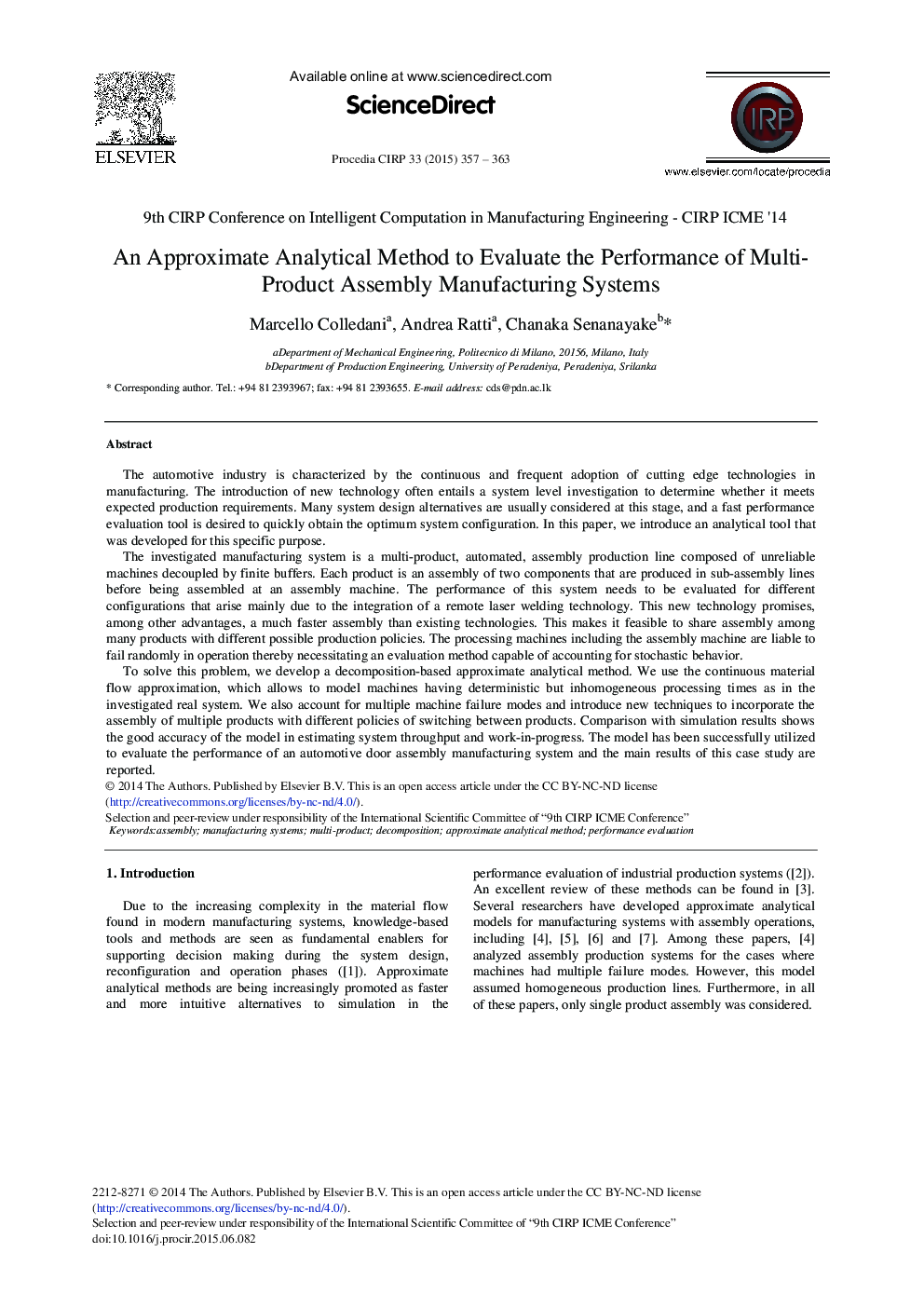| Article ID | Journal | Published Year | Pages | File Type |
|---|---|---|---|---|
| 1699342 | Procedia CIRP | 2015 | 7 Pages |
The automotive industry is characterized by the continuous and frequent adoption of cutting edge technologies in manufacturing. The introduction of new technology often entails a system level investigation to determine whether it meets expected production requirements. Many system design alternatives are usually considered at this stage, and a fast performance evaluation tool is desired to quickly obtain the optimum system configuration. In this paper, we introduce an analytical tool that was developed for this specific purpose.The investigated manufacturing system is a multi-product, automated, assembly production line composed of unreliable machines decoupled by finite buffers. Each product is an assembly of two components that are produced in sub-assembly lines before being assembled at an assembly machine. The performance of this system needs to be evaluated for different configurations that arise mainly due to the integration of a remote laser welding technology. This new technology promises, among other advantages, a much faster assembly than existing technologies. This makes it feasible to share assembly among many products with different possible production policies. The processing machines including the assembly machine are liable to fail randomly in operation thereby necessitating an evaluation method capable of accounting for stochastic behavior.To solve this problem, we develop a decomposition-based approximate analytical method. We use the continuous material flow approximation, which allows to model machines having deterministic but inhomogeneous processing times as in the investigated real system. We also account for multiple machine failure modes and introduce new techniques to incorporate the assembly of multiple products with different policies of switching between products. Comparison with simulation results shows the good accuracy of the model in estimating system throughput and work-in-progress. The model has been successfully utilized to evaluate the performance of an automotive door assembly manufacturing system and the main results of this case study are reported.
